Introduction
Many businesses overlook one of the most potent and cost-effective brand-building tools: branded items. Too often, we see generic logo-printed shirts and mugs that nobody wants to use. But this wastes the chance of maximizing the impact of well-designed branded merchandise.
Unlike digital ads that are gone in seconds, branded items last as they are used at home and work. Well-designed branded items do more than just spread your company’s name. They nurture loyalty, trust, and top-of-mind awareness.
Of course, this takes careful planning and execution. Read on to learn about the overlooked power of branded items in shaping perceptions and building your brand.
Why It’s Important to Choose Useful Branded Items?
Your choice of branded items is crucial in achieving your goals. Merely slapping logos on generic merchandise like pens, shirts, and tumblers can leave them ignored or in the trash. The quality of your branded merchandise can also impact your company’s image.
Flimsy, low-budget, and poorly printed items can make you look cheap, while high-quality and well-designed branded items convey a premium image. People are more likely to parade them around, too!
But looks aren’t everything. Your brand items need to be functional, too. While USB drives are practical, they may not be as widely used in 2025 as online file sharing grows.
Most companies underestimate how complex branded merchandise strategy really is. Hiring a brand identity company at this stage ensures that your products reflect a unified brand message. Such experts align your merchandise aesthetics with your identity guidelines, helping every object: from mugs to apparel.
Branded Items for Your Team
Here are our top picks of branded items that balance form and function.
1. Reusable water bottles
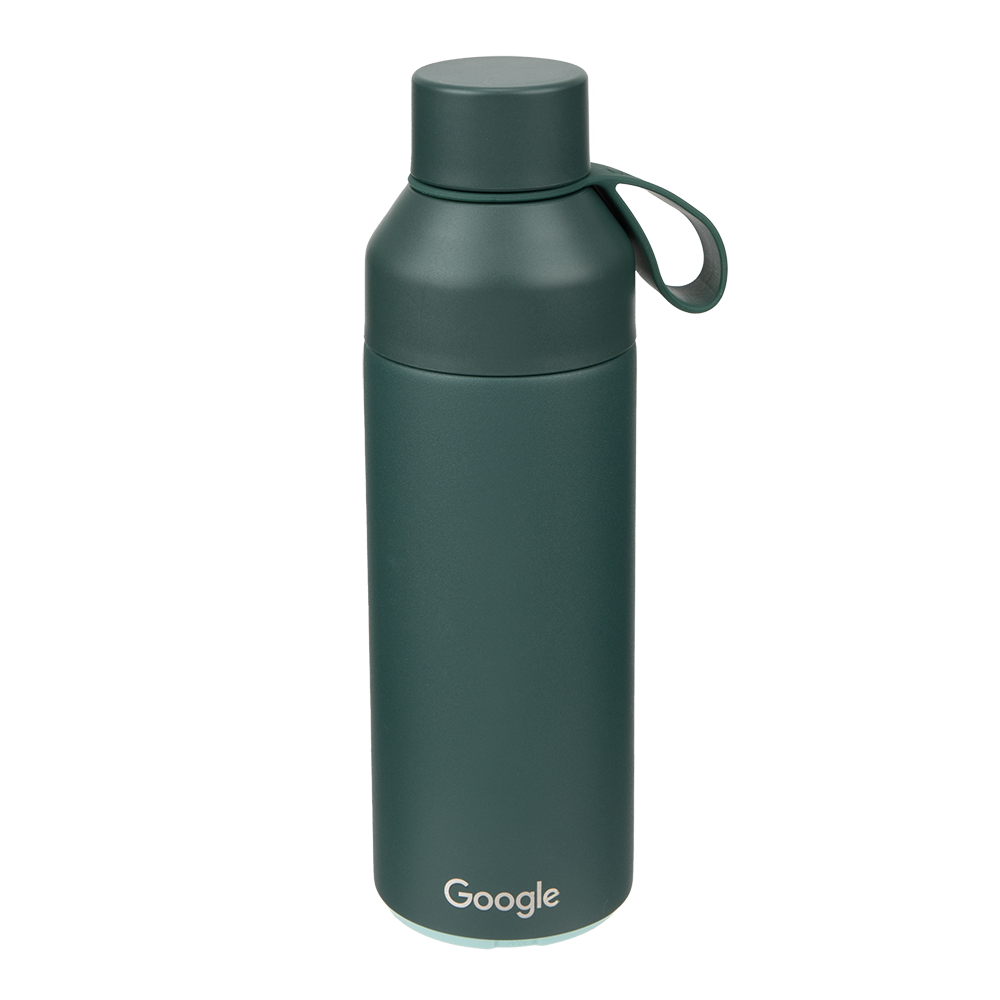
Google’s reusable branded bottle. Image via Google
Reusable water bottles are trendy, making them a great branded item choice. Their popularity is evident in North America's expected $12 million increase by 2030.
These eco-friendly, healthful products align seamlessly with the values prioritized by consumers today. They also provide a versatile canvas for creative and brand-aligned print illustrations. Moreover, the materials used can bring different advantages.
Stainless steel and glass water bottles bring a premium feel, while plastic ones are lightweight.
2. Shopper bags
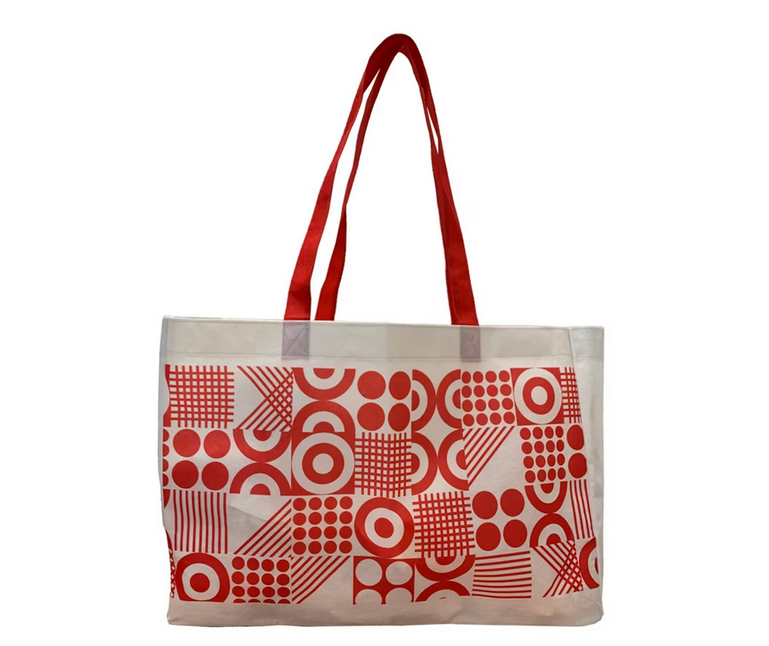
Target incorporates its bull’s eye logo on its tote bag. Image via Target
Shopper bags are great because of their large capacity, whether you’re grocery shopping, going to work, or traveling. And since they are carried around in public, think of them as walking billboards that help expand your reach. This is especially true when they have fashionable and interesting designs.
Unlike disposable paper or plastic bags, people are more likely to keep shopping bags and reuse them multiple times, ensuring prolonged exposure.
3. Personalized notepads/notebooks
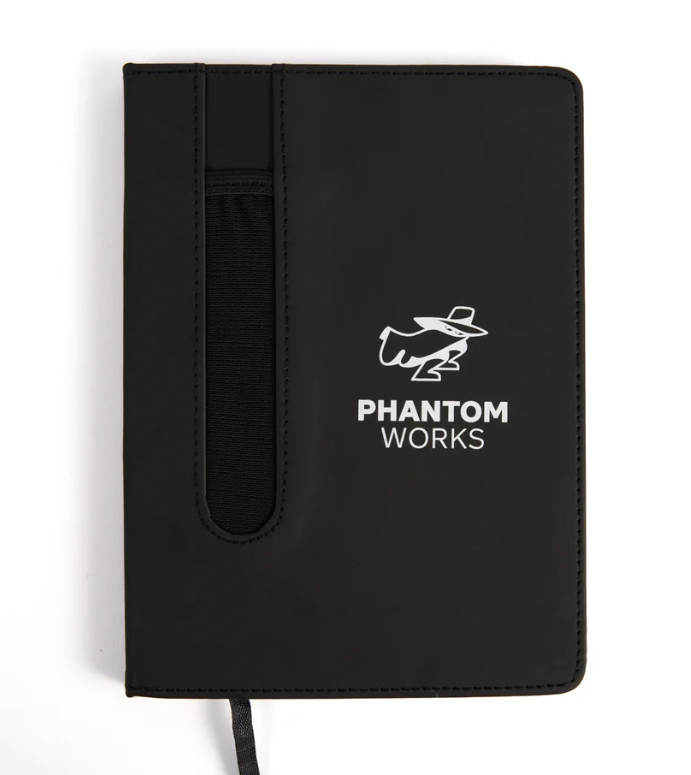
Boeing Phantom Works notebook. Image via Boeing Store
Notepads are among the most useful desk accessories, even in the digital age. They are versatile, placed everywhere from desks to bags, ready for jotting down notes and reminders.
Personalized notepads can be an effective branded item, with custom cover designs that match your brand's color scheme and personality. Placing your logo on each sheet can ensure your company is remembered. Notepads are genuinely helpful, making them a practical and memorable promotional product.
4. Pens and other writing materials
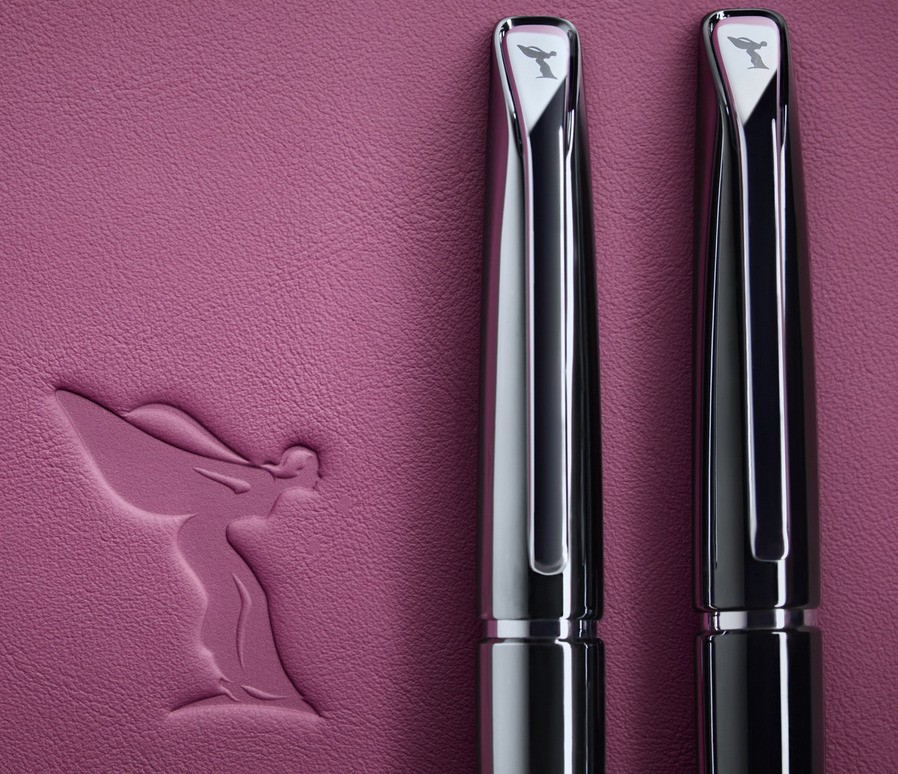
Elegant branded pens via Rolls-Royce
Pens and other writing materials, like notepads, are another cost-effective branded item. They are also often used and can last for months or even years if made from high-quality materials.
Pens make great gifts on special occasions, like company anniversaries and other events. They are also associated with professionalism, especially if they have modern and sleek designs.
5. Coffee mugs and thermos mugs
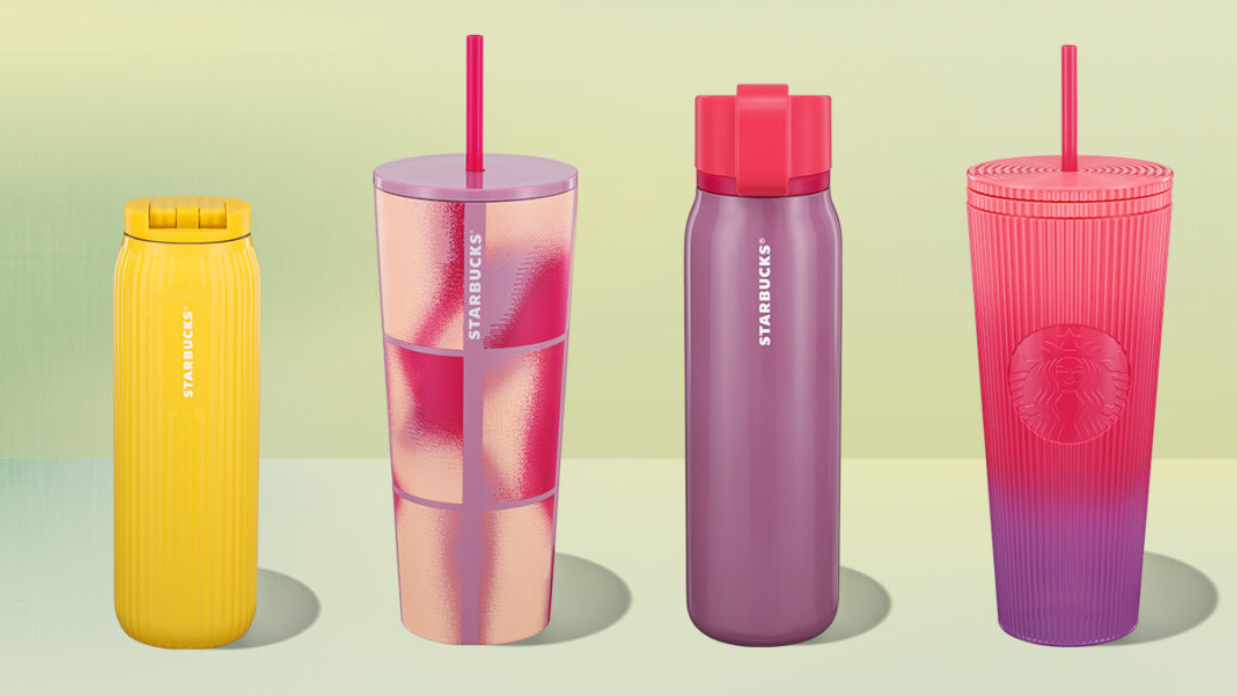
Colorful mugs and tumblers via Starbucks
Another eco-friendly favorite is mugs and thermos mugs!
Branded and thermos mugs can be personalized for seasonal promotions, such as Christmas or other special events. This allows businesses to refresh their branded items and stay current.
You can also leverage mugs and thermos mugs by providing limited-edition designs, which can become collectible items for loyal customers. This creates a sense of exclusivity and loyalty, encouraging repeat purchases. Employees using these mugs become brand ambassadors, too, reflecting support for the company internally and externally.
6. Chargers and power banks
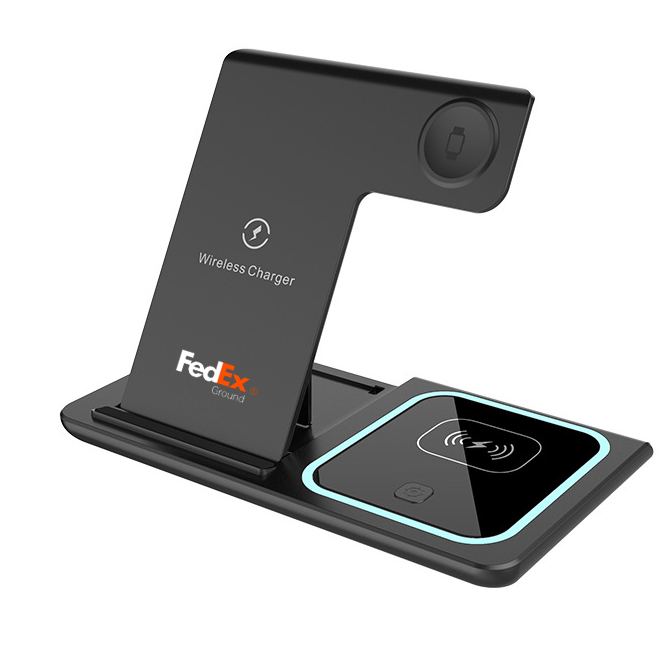
Sleek and modern wireless charger via FedEx
Everybody needs chargers and power banks as we rely heavily on digital devices. With these branded items, you provide something people will use and value, making your brand memorable and appreciated. Not to mention, power banks can also be pricey, which can make people think your brand values them enough to spend this much.
7. Clothes with company logo

Script tees and tank top via Coca-Cola
Clothes with company logos are a staple of branded swag. These can include branded tops, T-shirts, jackets, hoodies, and outerwear customized for every user.
Branded clothing gives employees a cohesive and professional look for events. When worn casually, it acts as a walking ad for your company. But the design must be compelling enough for people to wear it. Unique and on-brand designs that resonate with your audience will help your branded apparel stand out.
8. Personal care kits
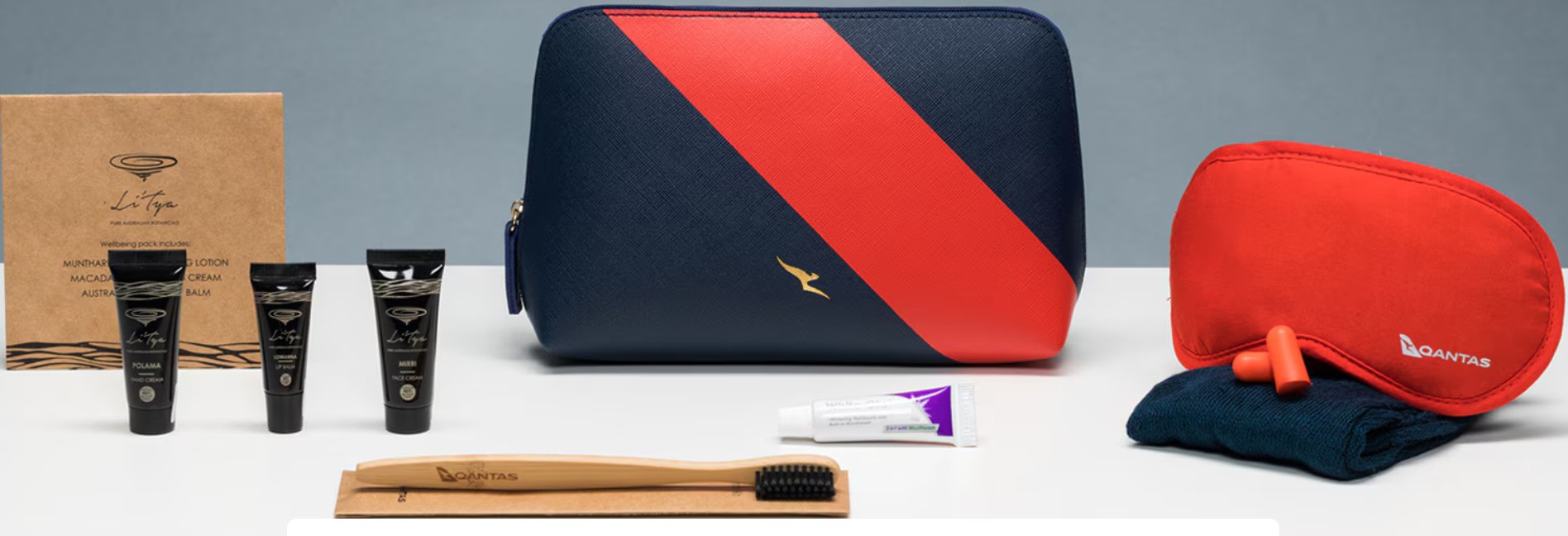
Elegant amenity kit via Qantas
Personal care kits can communicate how thoughtful, practical, and caring you are with your end-users. They are also versatile, as they can be designed for various purposes, like corporate gifts for clients and employees or giveaways at events. Finally, the kits are filled with daily essentials, so people are likelier to keep them around, reinforcing brand presence.
Elements of Branding to Strengthen Your Company’s Brand Recognition
Several factors influence the success of your branded items. Let’s examine each element and discuss how to use it best.
Company name and logo
A company’s name and logo on branded merchandise are crucial in helping people recognize and remember the brand. They also convince them to use and carry the merchandise, especially if the brand is highly perceived.
However, how you place these elements can impact the efficiency of your branded items. For instance, your logo should be unique yet simple and easy to remember. Your logo could be vibrant and playful if your company is about fun and adventure. The size of your company name should also not overwhelm the design of your branded items.
Color palette
Colors appeal to different emotions, which can influence decisions. Hence, you should choose a color palette that reflects your brand's personality, image, and values. For example, an eco-friendly brand could integrate earthy tones into its branded merchandise designs.
In addition to leveraging color psychology, ensure the colors look balanced, providing sufficient contrast without reducing readability and visual appeal.
Fonts and typography
The fonts and typography you choose can significantly impact the personality and tone of your branded items. Sans-serif fonts often convey a friendly and approachable style, while serif fonts tend to be more serious and professional.
Beyond just the font type, you’ll also want to consider factors like font size, weight, and spacing. Ensuring your text is easy to read, especially for older audiences, is crucial for making branded items inclusive.
Slogan or motto
Not all branded items need a slogan or motto, but they can be a great addition, especially when targeting young people. You’ll see totes with funny quips and notepads with inspirational quotes.
Of course, these cannot be random lines. They have to speak to your audience and be relevant to your brand. Take Nike’s “Just Do It” or L’Oreal’s “Because You’re Worth It”, which look good on mugs, totes, and pens. You can also incorporate feeling or emotion words, like ‘happy’, ‘love’, ‘excited’, and ‘confident.’ You get the idea!
Tone and style of communication
The tone and style of communication form the brand personality. For example, a conversational and friendly tone makes interactions with users feel more personal and welcoming. Adding funny messages can connect more with your audience and make your brand memorable. This approach in communication increases the likelihood of them using your branded items.
How to Choose the Right Branded Items for Your Team?
Below are foundational steps you can apply when curating and designing your branded items.
Step 1: Know the end-users of your branded items
Knowing your target audience is key to choosing the right branded items. Conduct a demographic analysis to understand your potential end-users. Look into their value, lifestyles, and behavior. You can also run market research surveys, focus groups, or interviews to gather direct feedback from participants. And don’t forget to utilize the website and social media insight tools to learn about what your audience is talking about and their preferences.
Step 2: Zero in on their purpose
Categorizing branded items helps you maximize your investment and achieve specific goals. For instance, prioritize obvious and portable items like clothing and tote bags to drive brand awareness. You can also focus on everyday essentials that people use frequently, like travel mugs, to keep your brand top-of-mind.
Step 3: Reflect your brand
While aesthetically pleasing designs are a plus, your branded merchandise should include elements that communicate your brand values, identity, and personality. This is possible through strategically using your brand’s color palette, illustrations, fonts, slogans, or mottos. Ensure your logo and company name are well incorporated without overwhelming the design.
Step 4: Get feedback
The next step in your design process is to gather feedback from your potential users, including your team. This ensures that the branded items are user-centric and meet their expectations. Feedback can improve the creative process and innovation by challenging designers to think outside the box.
You can gather feedback by collecting quantitative insights from surveys, A/B testing product designs, facilitating focus groups, and encouraging users to share testimonials. The more you know, the better.
Step 5: Ensure high-quality products
If you can, always prioritize quality over quantity.
High-quality materials can create a positive perception of your brand. This helps associate you with reliability and trustworthiness.
High-quality branded items also last longer and are more functional. They can set you apart from other brands and help you gain a competitive advantage. While they may be more expensive, they lead to better ROI over time.
Step 6: Budget wisely
Producing branded items can be expensive if you’re not careful with your budget. Aside from investing in high-quality materials for a better ROI, consider purchasing around seasonal events or holidays when branded items are more relevant.
Do not hesitate to talk to suppliers about prices and allocate a quarterly budget instead of annually. This helps prevent overspending, as you can adjust your budget if needed. Finally, include a contingency fund for additional expenses, like warehousing and other hidden fees.
Work with Experts
Branded items are a cost-effective and long-lasting way to promote your business and build brand awareness. They can grow customer loyalty, trust, and brand recall. They also bring a smile and make people feel they belong when gifting your team. However, achieving the expected results requires careful planning and execution.
May 23, 2025
